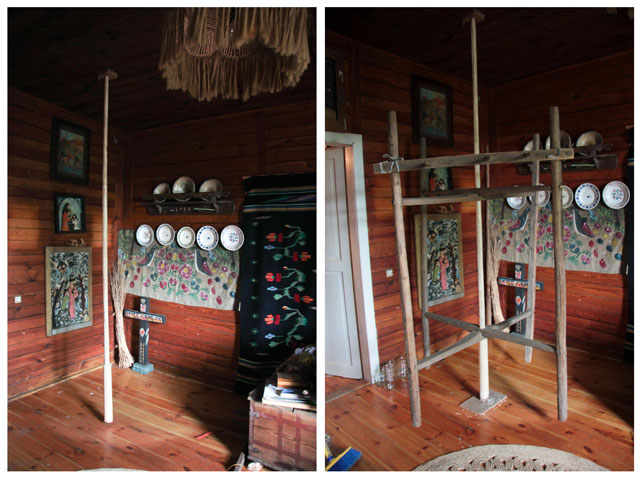We celebrate the 70th anniversary of the Warsaw Uprising (sometimes called Warsaw Rising) this year.
In 1944, the Western side of Warsaw had been occupied by German forces for five years. The Ghetto had been murderously emptied in 1943, its own uprising having failed. On the Eastern bank of the river Vistula, in the part of the city we call Praga, the Soviet armies gathered. Soviet planes had been dropping pamphlets calling Warsaw to arms for months now, and radio transmissions from Moscow where the Polish Committee of National Liberation had been formed urged citizens to rise up against the Germans.
Meanwhile, the German occupants were already enacting a retreat. Administrative workers were being evacuated. As Hitler had said to Hans Frank, the Governor-General of occupied Poland: Warsaw, perceived to be the nest of the Polish resistance against the Nazi new world order- the 'Polish problem'- was to be destroyed at the nearest opportunity.
Today, some will say the Uprising provided that opportunity, and that it had been cleverly incited by the Soviets, who wanted a clean territory to move into. They could very well have expected it- Hitler's orders were clear: raze Warsaw to the ground and kill every single citizen. Take no prisoners: make it a terrifying example for the rest of the world.
Was the Uprising good or bad? This is a debate which happens every year. Decisions made by the Polish Home Army are often questioned, called foolishness or outright treason in the face of the 200,000 civilian deaths, destruction of 90% of the city, and the subsequent unhindered entry of the Soviets, who proved to be wolves in sheep's clothing. On the other hand, waiting meekly for rescue or oblivion was not a preferable fate- Poland had no options at that time, as even the Allies' help was insufficient, and blocked by the Soviets (sic!). We had already been sentenced to oblivion by both of our neighbours.
Whatever you make of it, one thing remains true: seventy years ago, citizens of Warsaw, civilian and military alike, fought against all odds for two months to liberate their city.
We didn't always celebrate them- we weren't always able to. In fact, during the socialist days many former members of the Home Army and their families suffered severe repercussions. The Uprising was not a welcome or safe topic.
Even though the system changed in the 80s, it wasn't until the establishment of the Warsaw Rising Museum ten years ago that awareness of the Uprising began to improve. On the 60th anniversary, an advertising campaign aimed at young people was rolled out, featuring photographs of smiling elderly insurgents who would have been teenagers in 1944, and the question: "Would you go?"
I think that is the question we ask ourselves every time we notice the many reminders of the occupation scattered around Warsaw, every time we look at a building that looks old, and know that it was rebuilt from rubble. Would we go?
It's hard to put yourself in their place. They had no social media, no global information system. Their parents still remembered the first war, and their grandparents a time when Poland didn't even exist on the map. They lived in a country under the rule of an occupant who had made great efforts to erase their dignity through imposed language, racial and ethnic segregation enacted on multiple levels from the creation of a ghetto for Jews to tram carriages that said 'Nur für Deutsche', forced labour, deportations to concentration camps, random executions, and also very precisely planned executions aimed at cultural and national authority figures. Warsaw was no longer the capital. Warsaw was no longer a Polish city. Warsaw was dead.
Except it wasn't. Warsaw's motto is Semper Invicta- latin for 'Ever Invincible'. Clearly not because its walls have never been breached.
If you happen to be in Warsaw on August 1st, go out into the street just before 5:00 p.m. and wait. 5:00 p.m. on that day is "W" hour. "W" for Warsaw, and for walka, wybuch, wystąpienie; battle, explosion, stepping forward. You should be out in the street, because when the sirens sound, everyone will stop in their tracks and stand still for one minute. People will get out of their cars and stand up from their meals at restaurants. Trams will pause on the rails, buses will turn off their engines. Flags will be raised and flares fired in perfect silence.
And then everyone will go back to whatever it was they were doing.
It's my favourite way of celebrating the memory of the Uprising because it is the one that happens only because people want it to. Nobody forces us to stop. Nobody organises it. Nobody announces it, nobody stands up with a mic and says 'get ready now'. Nobody sets up a stage and gives out freebies afterwards. I guess at some point someone suggested: one minute of silence, and everyone thought it was a good idea. This happens in every part of Warsaw, and perhaps most spectacularly in the centre, where people no longer just stop what they are doing, but come out on purpose to pay their respects to those who fought.
There is another latin motto which we often hear in Poland: Gloria Victis. Glory to the Defeated.
I will blog again this month about other ways in which we pay our respects to the insurgents.
There is another latin motto which we often hear in Poland: Gloria Victis. Glory to the Defeated.
I will blog again this month about other ways in which we pay our respects to the insurgents.
-------
Meta:
The video above was shot on August 1st 2014 by the Warsaw Rising Museum. For the 70th anniversary, we stood in silence for 70 seconds instead of the usual minute.
Warsaw Rising Museum website: http://www.1944.pl/en/
Wikipedia Entry on the Uprising: http://en.wikipedia.org/wiki/Warsaw_Uprising









































